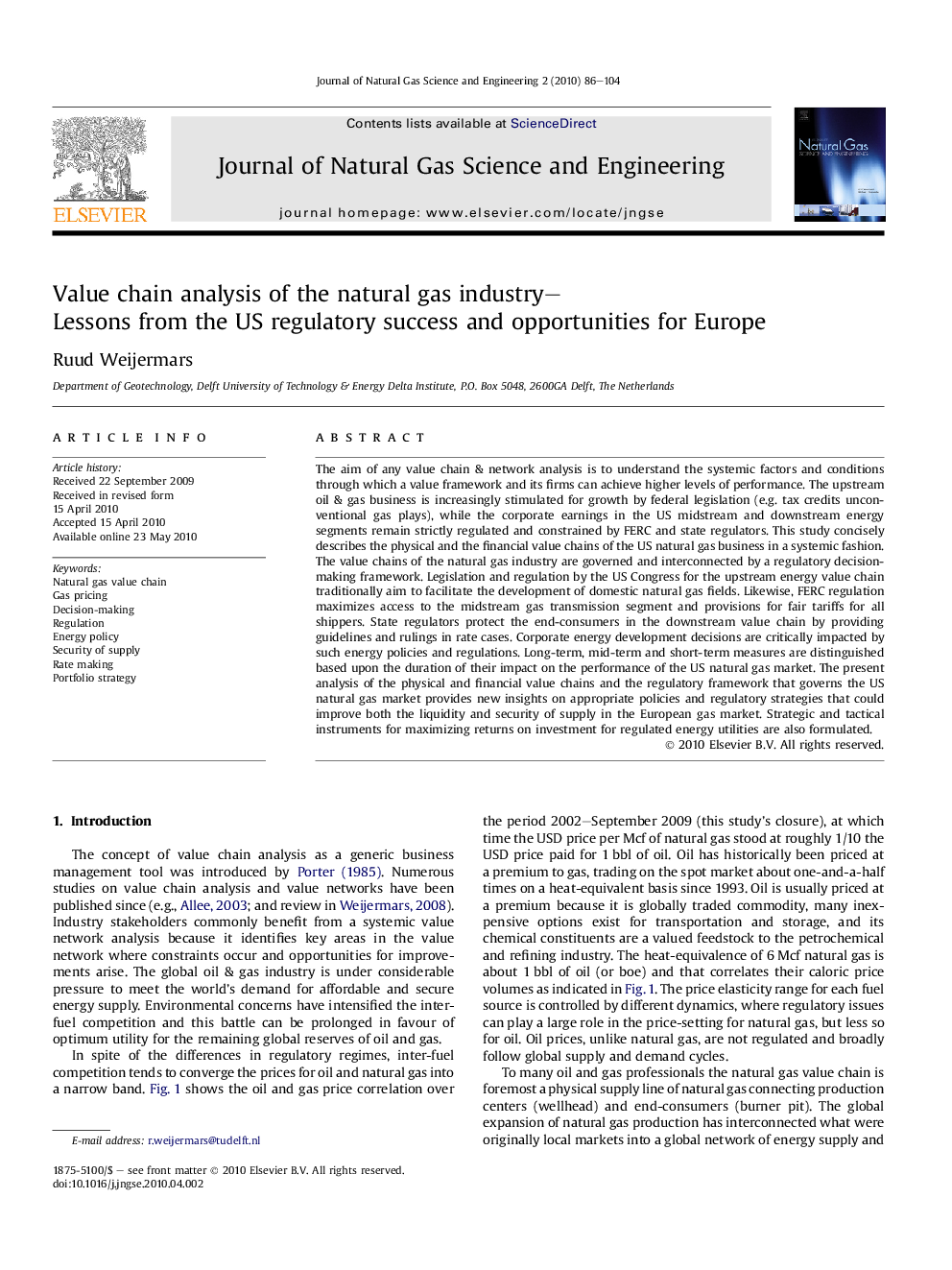| Article ID | Journal | Published Year | Pages | File Type |
|---|---|---|---|---|
| 1758247 | Journal of Natural Gas Science and Engineering | 2010 | 19 Pages |
The aim of any value chain & network analysis is to understand the systemic factors and conditions through which a value framework and its firms can achieve higher levels of performance. The upstream oil & gas business is increasingly stimulated for growth by federal legislation (e.g. tax credits unconventional gas plays), while the corporate earnings in the US midstream and downstream energy segments remain strictly regulated and constrained by FERC and state regulators. This study concisely describes the physical and the financial value chains of the US natural gas business in a systemic fashion. The value chains of the natural gas industry are governed and interconnected by a regulatory decision-making framework. Legislation and regulation by the US Congress for the upstream energy value chain traditionally aim to facilitate the development of domestic natural gas fields. Likewise, FERC regulation maximizes access to the midstream gas transmission segment and provisions for fair tariffs for all shippers. State regulators protect the end-consumers in the downstream value chain by providing guidelines and rulings in rate cases. Corporate energy development decisions are critically impacted by such energy policies and regulations. Long-term, mid-term and short-term measures are distinguished based upon the duration of their impact on the performance of the US natural gas market. The present analysis of the physical and financial value chains and the regulatory framework that governs the US natural gas market provides new insights on appropriate policies and regulatory strategies that could improve both the liquidity and security of supply in the European gas market. Strategic and tactical instruments for maximizing returns on investment for regulated energy utilities are also formulated.
